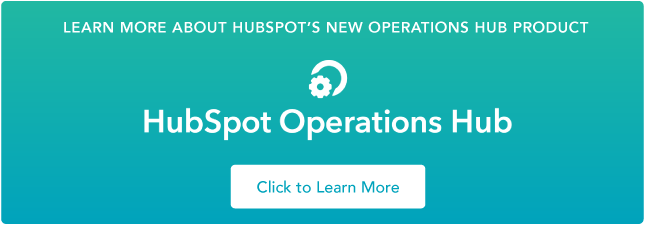Regardless of size — small, midsize, and large — companies can enjoy the benefits of an ERP system. In the past, these systems were exceedingly basic in their capabilities. However, new technology has allowed these companies to take advantage of their more comprehensive structures.
With an ERP tool, your business has access to the most recent advances such as system automation, artificial intelligence, and cloud-based storage. Ultimately, ERP systems allow your company to streamline its business process, optimize your productivity, and stay ahead in a competitive industry.
How does ERP work?
Enterprise resource planning allows your company to increase the productivity, efficiency, and transparency of business functions and processes. It accomplishes this by centralizing and integrating the essential parts of your business into one system.
Let’s say you decide to plan a party. You contact different vendors for the venue, music, catering, and decor. Additionally, you need to stick to your $10,000 budget. To manage this party, you create four avenues of communication with each of your vendors.
As you work through the details with four different companies, the process quickly becomes overwhelming. It’s a back and forth process of receiving information, troubleshooting issues, and readjusting your budget. You need to connect the live band with the venue to ensure the space can accommodate their equipment. The caterer needs confirmation about whether they need a license to serve drinks. All your planning is segmented into different conversations, when you could simplify it into a conversation with one person — a party planner.
Your party planner is your database for all information regarding the event. They condense their work into updates about the venue, music, catering, and decor. As changes happen during planning, they monitor the budget to guarantee you haven’t gone over. You can also contact your party planner to get real-time information on the status of the centerpieces or how many options the caterer will offer for dinner. A party planner for your event is equivalent to an ERP system for your business.
Enterprise resource planning reduces the resources your business needs to run. Say your company uses Gusto for human resources and payment, Shopify for managing its sales, and QuickBooks for accounting. You would manage that data in three different places if you aren’t using an ERP system. With this system, your company can integrate these vital business functions in one location and access accurate, real-time data.
The Benefits of ERP Systems
ERP systems help businesses bridge gaps in their systems, processes, and data. The comprehensive features of these programs work for small to large companies. However, it’s critical to note that ERP systems won’t eliminate every issue within your business, regardless of its size.
First, consider the organization of your company. Evaluate how an ERP system will fit into the day-to-day execution and management of business activities. Then you will be able to reap the benefits of using ERP.
The key benefits of ERP systems include:
- Higher Productivity
- Improved Business Insights
- Reduced Operational Costs
- Increased Collaboration
- Reduced Risk
Higher Productivity
ERP systems allow your company and its employees to work smarter, not harder. It helps you streamline and automate business processes, so your team doesn’t waste time or energy on repetitive tasks.
Improved Business Insights
One of the biggest reasons for implementing ERP is to provide your business with data. These systems will help guarantee that the information you and your company use is accurate and current. The real-time data ensures that your operations run efficiently and that you can make adjustments when necessary.
Reduced Operational Costs
Closely tied to higher productivity, ERP systems will help you save on operational costs. When tasks take time, they cost money. When your company can streamline and automate its business processes through ERP, you remove the cost associated with those operations because your team can focus its energy elsewhere.
Increased Collaboration
ERP systems allow you to connect all areas of your organization. It enables departments to collaborate and share knowledge. Additionally, it creates a level of transparency where employees can see how other departments function and contribute to the company’s goals.
Reduced Risk
As a business grows, the ability to control it typically decreases. Implementing enterprise resource planning gives executives and upper-level management the reins. These systems maximize visibility and control while providing the necessary information to ensure your company complies with laws and regulations.
The ERP Effect on Business Functions
Although it might not be apparent at first, most businesses have similar core functions within their organizations. In the previous section, we discussed the overall benefits of ERP; however, the benefits are magnified when you analyze them against common functions.
ERP systems can improve universal business functions, such as:
Finance & Accounting
When managing finance and accounting functions, it’s critical to maintain control over the process and minimize mistakes as much as possible. ERP systems will give you a higher degree of control over your business through their real-time visibility into your data. It will also minimize errors associated with manual data entry that can lead to accounting issues like incorrect invoices or pay stubs. Implementing an ERP system helps with money management, capital requirement estimations, budgets, and cost allocation.
Human Resources
Enterprise resource planning offers an abundance of improvements in human resource functions. Primarily, these systems help relieve employees of their tasks by streamlining core HR management functions like payroll, benefits, workforce management, and more. The data provided by ERP also enables this department to track employee performance and support hiring and recruitment functions.
Manufacturing & Supply Chain
The real-time data that ERP systems offer in manufacturing and supply chain functions is paramount. It gives manufacturers the ability to look at forecasts and sales reports to prepare for the unexpected demand of a product or prevent excess inventory from piling up in warehouses. An ERP system also offers integrations for supply chain management, where it optimizes the inflow and outflow of materials.
Retail
Do you identify as a retail business? Some companies might not consider themselves in retail; however, it is simply the sale of goods or services to a consumer for use or consumption. Most companies focus on the sale of something. That means most have retail functions. Before the advancement of modern technology, businesses relied on their brick-and-mortar operations. Now, companies have transformed their processes to merge these operations with e-commerce.
The ERP effect on retail functions benefits your company and its customers. The system can help you create a more seamless, personalized experience for customers. In turn, it has the potential to boost key performance indicators such as customer retention, average order value, and customer satisfaction.
Signs to Implement ERP
Enterprise resource systems enhance the overall processes and functions of any business. However, how do you know when to implement a system? The following are signs that your company might need to adopt ERP or a new ERP tool:
- You rely heavily on manual processes. If your company and its employees lose countless hours on daily, repetitive tasks, an ERP system can free up their schedules and increase employee satisfaction. These systems will streamline tasks and automate processes so your staff can focus their efforts on more challenging, essential work.
- You lack real-time data. All businesses need data. It could be information on sales, inventory, employee performance, customer satisfaction, or more. To keep up, your company needs access to its data as it changes. Not only does ERP allow you to view this data, but it makes it available to your employees so they can make sound decisions as they fulfill their duties.
- Your system can’t keep up with your growth. As your business grows, you must scale your system with it. If your system can’t accommodate frequent or fast changes, it may be time to consider implementing an ERP. Not only can you specify enterprise resource planning to your exact business functions, but many software options offer immediate upgrades and updates. It ensures your business never falls behind technological advances.
- You need to improve customer service. Keeping your customers satisfied is critical to running a successful business. Most ERP software includes customer relationship management (CRM) functions. It centralizes data and enables your team to handle questions and issues more quickly.
The Types of ERP Systems
Once you have identified a need for ERP within your business, the next step is deciding which system is best suited to your company.
When evaluating ERP systems, you want to look for components such as automation, integrations, built-in analytics, and data visualization. These features should appear in the type of ERP system you choose.
While there has been more interest in cloud deployment, each system has advantages and disadvantages. ERP systems fall into three categories: on-premise, cloud-based, and hybrid.
On-Premise ERP
This is an enterprise resource planning model where you control everything. It’s referred to as “on-premise” or “industry-specific” because the ERP software is installed on computers and systems in your business. This model is very hands-on and requires your staff to stay on top of its installation and maintenance.
On-premise ERP usually requires you to purchase the software license to gain full control. While this added cost might be a disadvantage, the system is beneficial for companies with a well-trained IT department. A skilled tech team will allow your company to have flexibility in designing the ERP system to your specifications; however, these employees will also need to be on hand to manage implementation and security. When choosing an industry-specific ERP, note that some of these systems can quickly become outdated as technology advances with new releases and features.
Cloud-Based ERP
Cloud-based ERP is when your ERP software is hosted on a cloud server by a vendor. It means you will access its service over the internet. Cloud ERP software is the most popular choice amongst businesses because it has many benefits and few challenges.
When buying a cloud-based ERP tool, there is a lower upfront cost associated with the purchase. Cloud-based ERPs cost at least 30% less than on-premise ERPs. Additionally, cloud-based ERPs make real-time access to your data possible at any time and from anywhere, so long as you have internet access.
Another benefit of this software is that it’s easily customizable to your business. As your company grows, the system can be modified and tailored to fit your processes. Luckily, you won’t have to worry about making these changes. Most cloud ERP vendors will automatically update your system with upgrades.
Hybrid ERP
If you want to implement a combination of both on-premise and cloud-based ERP, you might deploy a hybrid ERP model or two-tier ERP. This method signifies that your applications and data are stored in a cloud server and at your business.
Your company might choose a hybrid ERP model if it already uses an on-premise system. For example, by combining the two, your company can manage its core business functions in-house while moving its CRM processes to a cloud server.
Hybrid ERPs cost less than on-premise ERPs and more than cloud-based ERPs. With some software vendors now offering cloud capabilities, implementing the hybrid method can help you keep the control of your business that on-premise ERP allows while accessing new upgrades and features associated with cloud ERP.
ERP Software
Knowing the benefits of ERP software isn’t enough. You still need to select a system that will lead to success. From increasing productivity to reducing operational costs, here are four ERP software systems that will allow you to accomplish your business goals.
1. Oracle Cloud ERP

Oracle Cloud ERP is a popular ERP solution software. Its popularity becomes increasingly evident when you discover the corporate brands that have been customers, like FedEx, Dropbox, Honda, Lyft, Wendy’s, and Square. The software is updated quarterly, so customers always have access to updated technology. In addition to this benefit, Oracle Cloud ERP users can get a clearer picture of their financials, empower employees by streamlining procurement, and predict and analyze analytics with artificial intelligence.
2. SAP ERP

Businesses of all sizes can benefit from using SAP’s ERP software. It is a cloud-based software that allows your business to access its system on a public or private cloud — a customization you can make for easy access at any time and from anywhere. Some of the software’s key capabilities include asset management, manufacturing, resource and development engineering, and sourcing and procurement. With two solutions to choose from, small and midsize businesses have the option of SAP Business One or SAP Business ByDesign, respectively.
3. Microsoft Dynamics 365

To connect your data, processes, and teams, consider Microsoft Dynamics 365. Through a series of applications and integrations, this ERP software will give you the opportunity to create a hyper-connected business. Microsoft Dynamics 365 focuses on multiple industries — finance, retail, manufacturing, and more — making it a top choice for many businesses. A downside to using this software is that 24/7 support isn’t offered; however, Microsoft makes up for it with the benefits of predictive analytics and third-party integrations.
4. Productive

What sets Productive apart from other software on this list is that it’s purpose-built for professional services companies. It's a popular ERP solution for consulting firms and agencies. First, Productive offers a range of professional services automation features in one platform. This includes time tracking, workload balancing, time off management, scenario planning and forecasting, project management, and more. Second, Productive is easier to implement and onboard to than most dedicated ERP software. Overall, this makes Productive a great option for professional services firms seeking integrated resource, project, and financial management software.
5. Sage 300

Choosing an ERP system can be difficult; however, Sage 300 looks to make the selection as easy as possible. With their evaluation guide, the ERP software company helps you identify how to choose the right system. Sage 300 focuses on four key areas: Finance, sales management, inventory, and payment processing. Some of its abilities include setting up and maintaining general ledger accounts, automating purchase order procedures, producing inventory reports to manage stock, and integrating with payment apps like PayPal and Stripe.
The Future of ERP
Enterprise resource planning is here to stay. Its systems allow your company to increase productivity and efficiency while providing control and transparency over business functions and processes. The question isn’t whether your company needs to implement an ERP system. The real question is, What system should it use? Whether you choose on-premise, cloud-based, or hybrid enterprise resource planning, there’s no denying that an ERP system will take your business to a new level.



![The 12 Best Free Flowchart Templates [+ Examples]](https://53.fs1.hubspotusercontent-na1.net/hubfs/53/free-flowchart-template-1-20240716-6679104-1.webp)

.webp)
![What are ISVs? [Examples, Benefits, and More]](https://53.fs1.hubspotusercontent-na1.net/hubfs/53/ISV.png)

